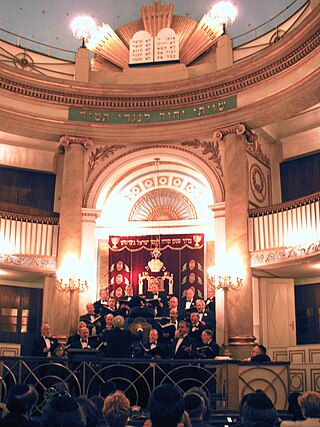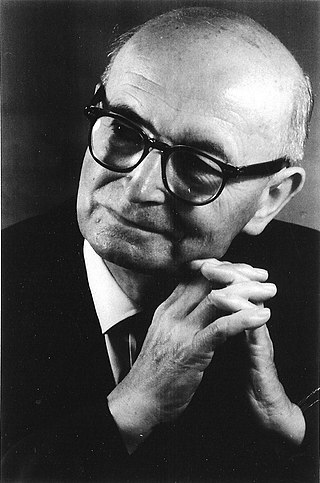
A hazzan or chazzan is a Jewish musician or precentor trained in the vocal arts who leads the congregation in songful prayer. In English, this prayer leader is often referred to as a cantor, a term also used in Christianity.

Philosemitism, also called Judeophilia, is "defense, love, or admiration of Jews and Judaism". Such attitudes can be found in Western cultures across the centuries. The term originated in the nineteenth century by self-described German antisemites to describe their non-Jewish opponents. American-Jewish historian Daniel Cohen of the Vienna Wiesenthal Institute for Holocaust Studies has asserted that philosemitism "can indeed easily recycle antisemitic themes, recreate Jewish otherness, or strategically compensate for Holocaust guilt."

Alice Perrers, also known as Alice de Windsor was an English royal mistress, lover of Edward III, King of England. As a result of his patronage, she became the wealthiest and most influential woman in the country. She was widely despised and accused of taking advantage of the old king.

Sivan is the ninth month of the civil year and the third month of the religious year on the Hebrew calendar. It is a month of 30 days. Sivan usually falls in May–June on the Gregorian calendar.

Adela of Normandy, of Blois, or of England, also known as Saint Adela in Roman Catholicism, was a daughter of William the Conqueror and Matilda of Flanders. She later became the countess of Blois, Chartres, and Meaux by marriage to Stephen II of Blois. Her husband greatly benefited from the increased social status and prestige that came with a marriage into such a wealthy and powerful family. She was regent of Blois during the absence of her spouse in 1096–1100 and 1101–02, and during the minority of her son from 1102 until 1120. Her marriage also laid the groundwork for a period of extended strife in the Anglo Norman lands, Adela was the mother of King Stephen of England whose taking of the throne in preference to her niece Empress Matilda led to the civil war known as The Anarchy.

William of Norwich was an apprentice who lived in the English city of Norwich. He suffered a violent death during Easter 1144. The city's French-speaking Jewish community was blamed for his death, but the crime was never solved.

The Rhineland massacres, also known as the German Crusade of 1096 or Gzerot Tatnó, were a series of mass murders of Jews perpetrated by mobs of French and German Christians of the People's Crusade in the year 1096, or 4856 according to the Hebrew calendar. These massacres are often seen as the first in a sequence of antisemitic events in Europe which culminated in the Holocaust.

Eleanor of Castile was Queen of England as the first wife of Edward I. She was educated at the Castilian court and also ruled as Countess of Ponthieu in her own right from 1279. After diplomatic efforts to secure her marriage and affirm English sovereignty over Gascony, 13-year-old Eleanor was married to Edward at the monastery of Las Huelgas, Burgos, on 1 November 1254. She is believed to have birthed a child not long after.

Elizabeth Eloise Kirkpatrick Dilling was an American writer and political activist. In 1934, she published The Red Network—A Who's Who and Handbook of Radicalism for Patriots, which catalogs over 1,300 suspected communists and their sympathizers. Her books and lecture tours established her as the pre-eminent female right-wing activist of the 1930s, and one of the most outspoken critics of the New Deal, which she referred to as the "Jew Deal". In the mid-to-late 1930s, Dilling expressed sympathy for Nazi Germany.

Shelomo Dov Goitein was a German-Jewish ethnographer, historian and Arabist known for his research on Jewish life in the Islamic Middle Ages, and particularly on the Cairo Geniza.

Theobald V of Blois, also known as Theobald the Good, was Count of Blois from 1151 to 1191.
The history of the Jews and the Crusades is part of the history of antisemitism toward Jews in the Middle Ages. The call for the First Crusade intensified the persecutions of the Jews, and they continued to be targets of Crusaders' violence and hatred throughout the Crusades.
The United Religious Front was a political alliance of the four major religious parties in Israel, as well as the Union of Religious Independents, formed to contest the 1949 elections.
Esther Brandeau is notable in the history of the Jews in Canada as the first Jew to set foot in the country, travelling from France to New France.

The Shepherds' Crusade of 1320 was a popular crusade in Normandy in June 1320. Also well known as "the Pastoureaux of 1320". It originally began when a large group of common-folk banded together to preach a crusade after a teenage shepherd said he was visited by the Holy Spirit. Initially aiming to help the Reconquista of Iberia, it failed to gain support from the church or nobility and instead murdered hundreds of Jews in France and Aragon.
Ruby "Rivka" Daniel was a Malayali of Cochin Jewish heritage, the first Malayali woman in the Indian Navy, and the first Cochin Jewish woman to publish a book. Between the years of 1982–1999 Daniel translated into English over 120 Judeo-Malayalam women’s songs. Her translation efforts led the way for an ongoing international project to translate and analyze the songs within the Cochin Jewish community.
Robert Leon Chazan was an American historian who was the S.H. and Helen R. Scheuer Professor of Hebrew and Judaic Studies at New York University.
Minna of Worms was a Jewish businesswoman and martyr, killed by antisemitic Christians. She was an influential Jewish person, being a significant moneylender with clients and friends among the Christian nobility. Minna was one of the most famous victims of the 1096 Worms massacre which occurred during the First Crusade. She was murdered after refusing to convert Christianity.
Dulcea of Worms was a German-Jewish businesswoman and lender. She was the spouse of a famous Jewish leader.
Belia of Winchester was an English-Jewish businesswoman and moneylender.











